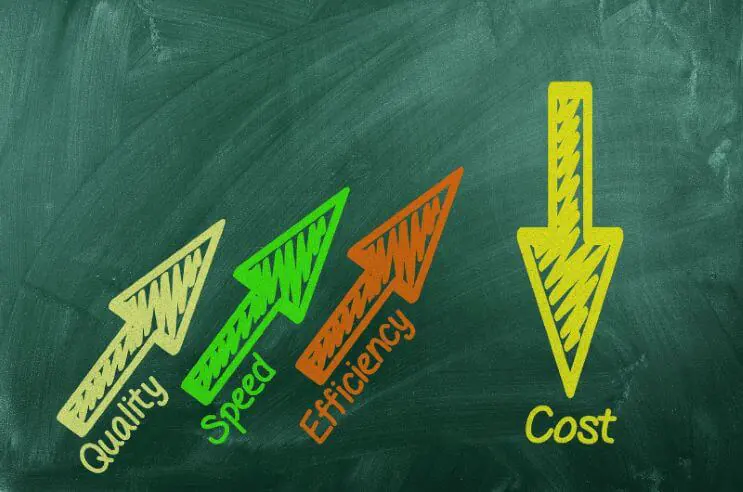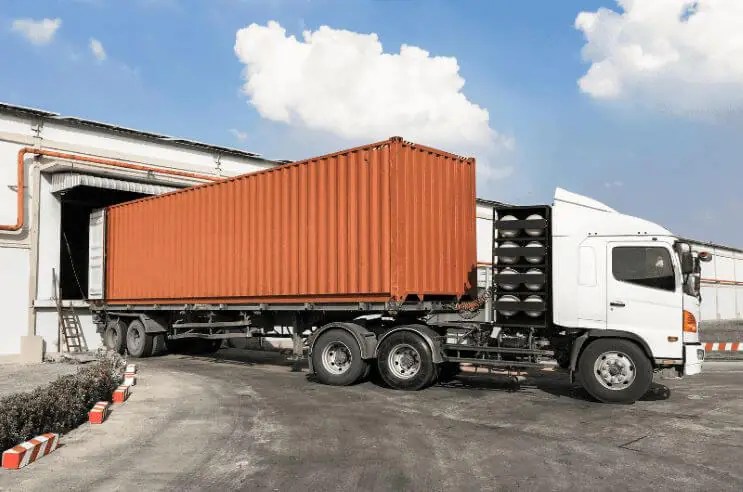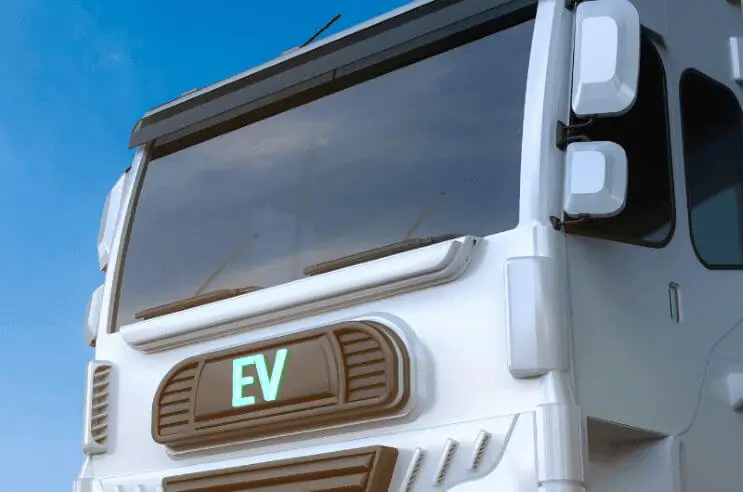Maximize your Profit: 5 Tips to Reduce Logistics Costs
It’s no surprise that the goal of every business is to maximize profit. There are two basic ways to increase profit within a company: the first is to increase revenue and the second is to reduce costs. In this article, we will provide you with 5 tips on how to reduce logistics costs.

Source: www.canva.com
Whether you run a logistics company, a manufacturing firm, a retail chain, or an e-commerce business, transportation services and related logistics costs likely make up a significant portion of your overall expenses. Optimizing these costs will not only bring you savings but also many other benefits.
1. Optimize Your Route
The first tip that can lead to a significant reduction in transportation costs is route optimization. You can achieve this by using route planning software. This software not only finds the shortest distances between individual stops but also considers traffic conditions such as traffic jams or road closures. As a result, route planning will only take a fraction of the time.
Another method to optimize routes is to consolidate shipments. This means combining shipments from different orders into a single delivery, thereby making better use of vehicle capacity. Along with this, it is important to ensure that shipments are loaded in the order they will be unloaded. A step-by-step report can help with this by allowing you to track each step of the loading/unloading process and plan it effectively.
Utilize telematics systems (for example Geotab, Samsara, and others) to monitor transportation in real-time. You will gain precise information about the location of each vehicle, making operational management of transportation easier. Your dispatchers will be able to quickly respond to changes in traffic conditions (jams, closures, etc.) and suggest alternative routes.

Source: www.canva.com
Benefits of route optimization
What additional benefits, besides cost savings, does route optimization bring you?
- Reducing fuel consumption and minimizing mileage: By using route planning software that finds the most optimal route, you will not only reduce fuel consumption but also the number of miles driven. Optimal route planning can save up to 20% of fuel consumption (the American Transportation Research Institute (ATRI), 2024).
- Improving fleet utilization: Consolidating shipments helps improve fleet utilization, making operations more efficient.
- Optimizing labor utilization: Efficient route planning also helps with optimizing driver utilization leading to lower labor costs.
- Contributing to environmental sustainability: By reducing unnecessary mileage, route optimization lowers carbon emissions.
- Improving customer satisfaction: Faster and more reliable deliveries enhance the customer experience.
- Extending vehicle lifespan: Less driving means less wear and tear on vehicles, leading to lower maintenance costs and an extended vehicle lifespan.
SpeedyDelivery Case Study
A great example of the benefits that route optimization can bring is the case study of SpeedyDelivery. This mid-sized logistics company wanted to optimize its routes because they were facing issues such as high fuel costs, delayed deliveries, and underutilized fleet capacity. They decided to implement a route optimization solution. What were the results?
- The company reduced its fuel costs by 20%,
- delivered 15% more shipments on time (leading to greater customer satisfaction),
- and managed to deliver 25% more shipments with the same fleet size (log-hub.com, 2024).

Source: www.canva.com
2. Use Load Planning Software
Another tip for reducing logistics costs is to use load planning software. The cost of acquiring the system is minimal compared to the savings it can provide. After all, you don’t want to transport air. With a load planning system, you can plan the most effective loading of containers, trucks, pallets, or other cargo spaces within minutes and maximize the use of available space.
What are the benefits of using load planning software?
- It saves you time that would otherwise be spent on manual load planning.
- It optimizes space utilization because the software analyzes the dimensions and weight of each item and then determines the optimal arrangement within a cargo space.
- It leads to money saved by reducing transportation and labor costs.
- As a bonus, your company will be more environmentally friendly and produce less CO2 emissions by minimizing wasted space.
Tip: Would you like to know how much you could save by using load planning software? Use our online calculator. Just enter a few details and you’ll quickly see the potential savings.

Source: www.canva.com
3. Invest in Alternative Fuel Vehicles
To lower logistics costs, consider vehicles that use alternative forms of propulsion such as electric, hybrid, or compressed natural gas (CNG).
Electric vehicles (EVs), for example, completely eliminate the need for traditional fuel and use electricity instead, which is cheaper. Another advantage is that they dramatically cut carbon emissions and air pollution. For instance, according to research by the European Energy Agency (2018), driving an electric vehicle emits 17–30% less CO₂ per mile compared to a petrol or diesel vehicle.
However, not everything is perfect with EVs. If you want to read more about the advantages as well as the disadvantages of electromobility, check out our article about the future of electromobility.
Hybrid vehicles combine a traditional combustion engine with an electric motor, which optimizes fuel consumption and benefits the environment.
Compressed natural gas (CNG) vehicles use natural gas as a cleaner alternative to diesel or gasoline. CNG is typically several tens of percent cheaper than gasoline. For example, in January 2024, the average cost of CNG in the U.S. was approximately $2.95 per gallon of the gasoline equivalent. Now compare this to around $3.94 for diesel. This results in a price difference of $0.99, making CNG nearly 26% cheaper than diesel (afdc.energy.gov, 2024, Clean Cities Alternative Fuel Price Report).
Tip: Are you considering purchasing a new fleet and want to know exactly how much you’ll save on fuel costs? Try this online tool to calculate your fuel costs and savings.
Don’t forget to calculate the ROI
If you’re considering a large investment in a new fleet, it’s essential to calculate the return on investment (ROI). This will help you determine how long it will take for the savings on fuel and maintenance to offset the initial costs.
Here is the ROI formula:
𝑅𝑂𝐼 = (𝐶𝑢𝑟𝑟𝑒𝑛𝑡 𝑉𝑎𝑙𝑢𝑒 − 𝐶𝑜𝑠𝑡 𝑜𝑓 𝐼𝑛𝑣𝑒𝑠𝑡𝑚𝑒𝑛𝑡)/𝐶𝑜𝑠𝑡 𝑜𝑓 𝐼𝑛𝑣𝑒𝑠𝑡𝑚𝑒𝑛𝑡⋅100%

Source: www.canva.com
4. Schedule Regular Vehicle Maintenance
It might seem like a small detail, but regular vehicle maintenance ensures optimized performance and extends a vehicle’s lifespan. Complete regular inspections and maintenance tasks (oil changes, tire rotations, brake checks, etc.) based on the manufacturer’s recommendations or industry standards. This may increase your average transportation costs initially, but in the long run, this regular maintenance will save you money. Regular inspections allow you to identify and resolve potential issues before they lead to more significant repairs, helping you save on repair costs.
In addition to cost savings, regular vehicle maintenance also enhances safety. Well-maintained vehicles are less likely to experience breakdowns or mechanical failures while driving, which significantly reduces the risk of accidents.
Staff training is also essential in this process. Educate drivers on how to best care for the vehicle and when to report any malfunctions or issues (not just when dashboard warning lights come on, but also in cases of unusual noises and so on).
Statistics as evidence
According to a study by the National Highway Traffic Safety Administration (NHTSA), tire failures and wheel degradation contribute to about 43% of car crashes. Brake failure or degradation ranks as the second most common vehicle-related cause of accidents, playing a role in 25% of crashes. These findings highlight the critical importance of regular vehicle maintenance to prevent such issues (ctlawsc.com, 2024).

Source: www.canva.com
5. Consider Outsourcing Your Logistics Operations
For medium and small businesses, managing all supply chain management tasks such as transportation, warehousing, inventory management, and distribution, can be challenging and economically disadvantageous. Therefore, one good way to reduce logistics costs is to outsource your logistics operations to a Third-Party Logistics (3PL) Provider.
A few interesting statistics about 3PL:
- 3PL is used by 90% of Fortune 500 (a list of the largest American companies based on their annual revenue, compiled annually by Fortune magazine) companies (3plogistics.com).
- In 2024, the 3PL market is expected to be worth US $1.2 billion (factmr.com, 2024).
With a 7.6% compound annual growth rate (CAGR) from 2024 to 2034, the 3PL market is predicted to reach US $2.5 billion by that time (factmr.com, 2024).
Reasons you might consider this option
Cost savings: 3PL companies specialize in logistics operations which means they have established networks, technologies, and expertise that can lead to cost savings. They also typically benefit from economies of scale due to managing logistics for multiple businesses.
Expertise and experience: As mentioned, these providers are professionals in their field with extensive experience and knowledge of best practices. This can enhance the efficiency of your logistics operations and potentially improve the level of your services.
Focus on core business: By outsourcing part of your business to a third party, you will have more time to focus on what you are truly good at, the core of your business.
Flexibility: A significant advantage of using 3PL is the flexibility it provides. Whether your demand spikes rapidly or you experience slower periods, outsourcing offers the ability to scale your logistics resources up or down as needed.
Tip: Do you want to learn more about 3PL providers? Read our article to find out how 3PL works, how to choose a 3PL service provider, and much more.
Balance Costs and Quality
All the tips mentioned above will help your company reduce logistics costs. It’s up to you to decide which of these strategies to implement. Remember that, in addition to cost savings, these strategies also bring a range of other benefits such as increased efficiency, environmental sustainability, and better service levels.
However, it’s crucial to ensure that reducing logistics costs and any other expenses should never come at the expense of product quality or the quality of services you provide. This could negatively affect customer satisfaction and your company’s reputation, thereby reducing revenues. You would end up back at square one and fail to achieve your goal, maximizing profit.




